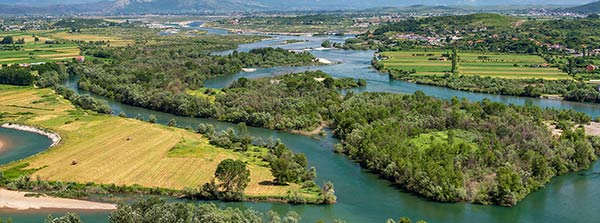

Buna River Protected Landscape is part of the national system of protected areas of Albania. Institutionally, the system of nature conservation and natural resource management in the country has gone through a major change over the last two years. In 2015, the newly established National Agency for Protected Areas (NAPA) and its regional branches (RAPA) took up the role of protected area management while the National Coastal Agency was tasked with the sustainable development of the coastal zone. In the same time, countries’ administrative units consolidated from rather fragmented communes into municipalities. By doing so, some basic preconditions for more sustainable management of natural resources have been put in place. Several MAVA partners, including IUCN, played a major role in establishing the new system. With support of the Italian Development Agency, IUCN has helped improve procedures on protected area management planning at the national level, facilitated the process of developing the Management Plan for the Buna River Velipoje PL 2016-2025, and supported the development of initial nature tourism infrastructure in the site.
As part of the MedPartnership project (funded by GEF) PAP/RAC and GWP-Med prepared transboundary “Integrated Resources Management Plan” for the wider Bojana/Buna Area, of which BRVPL is an integral part. The process was successful in demonstrating the necessity of applying integrated approaches across the adjoining coastal states of Albania and Montenegro in tackling any drivers of change, in particular those related to water management, pollution and unsustainable development practices. However, full transboundary cooperation on those issues has not yet been established so further promoting and assessing the feasibility of initiating transboundary cooperation might be needed.
Partly linked to the BRVPL is also the on-going project on protected areas and Natura 2000 (NaturAl) funded by the EC which helps improve the management of the nearby Shkodra Lake Managed Natural Reserve and possibly address some of the drivers of environmental change in BRVPL. The basin-level issues have been dealt with by the GEF project “Enabling Transboundary Cooperation and Integrated Water Resources Management in the Extended Drin River Basin” and are likely to continue.
The approach for addressing recognized threats in the BRVPL will be multi-pronged. It will consist of knowledge and data generation on the importance and values of coastal wetlands, support to law enforcement, capacity development for improved site management, awareness raising, introduction of sustainable land use practices and incentives for local stakeholders, habitat restoration, and innovative governance models. The main focus will be on improving the management of the site according to the priorities set out in the PA Management Plan. A tailored approach to governance will be undertaken in order to meet the specific requirements and needs of the MAVA strategy 2017-2022.
The goal of the project is to ensure the long-term conservation of species and habitats in the BRVPL with particular emphasis on halting or significantly reducing unsustainable development and water abstraction. By 2022, it is expected that the development threats that affect the BRVPL are significantly reduced or eliminated. It is expected that no further development in high value wetlands will occur and further degradation of habitats will be halted. Furthermore, it is expected that damaged wetlands and coastal habitats will be restored. In order to address socio-economic issues and human well-being, sustainable tourism and land use practices will be introduced and promoted. The objective is to link local economic activities with preserved coastal and wetland habitats.
The knowledge component of the action plan will focus on generating evidence and disseminating tools on the conservation values of the site, ecosystem goods and services provided therefrom, as well as on providing knowledge tools on innovative conservation and land use practices. Management effectiveness will be secured through capacity development of site managers and increased stakeholder engagement. It is expected that by 2022 protected area managers are fully capacitated to effectively manage protected areas and implement activities aimed at mitigating threats to the site. A set of measures and incentives to local stakeholders for sustainable land use and tourism activities will be developed and applied. Governance and stakeholder engagement mechanisms will be designed so as to support effective management of the area and address the development and land use threats.